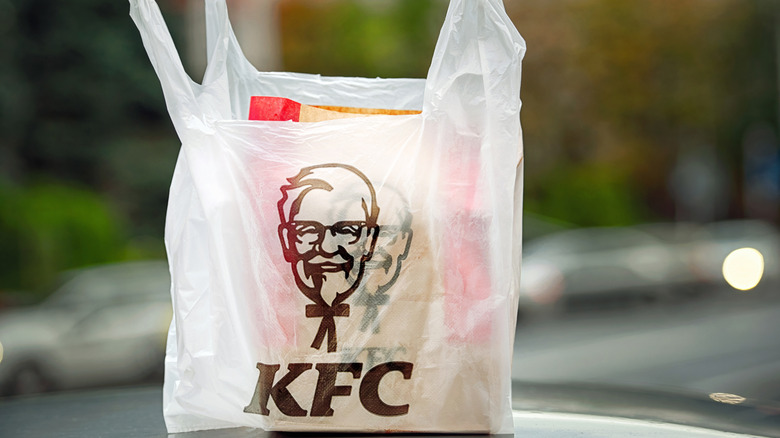The Type Of Oil KFC Uses For Its Fried Chicken
It's the worst-kept secret in the fast food biz that a proprietary herbs-and-spices blend is what makes KFC's fried chicken so good. What you may not have realized, however, is that frying oil has a lot to do with the quality of fried chicken as well. Back in 2007, the fast-food chicken eatery switched theirs up, moving from partially hydrogenated vegetable oil to low-linolenic soybean oil. The move came after two years of product research in which various oils were tested for flavor and consistency.
The parent company of KFC, Yum Brands, announced that the transition in cooking oils would be a move to cut back on trans fats in their menu offerings. This change preempted a 2020 deadline for American food manufacturers to discontinue the use of partially hydrogenated oils in the products they sold, which was a de facto ban on trans fats. In the early 2000s, trans fats became a public safety advocacy issue as experts pushed to eliminate the controversial fat for its dangerous health effects.
Nowadays, KFC is having a tough time as a company. But that's due to increased competition, not for its frying oil. Low-linolenic soybean oil, or LLSO, is a great option for frying and stacks up favorably against other fats.
The type of oil you choose affects your fried foods
Not all cooking oils are created equal. You probably have both vegetable and olive oil in your pantry, but how to tell which to use depends on whether you want the flavor to come through — olive oil has a distinct taste, while vegetable oil is a chameleon. Canola and vegetable oil are both neutral oils, but the difference between them is that canola can be lower in saturated fat. Peanut oil, yet another oil popular in frying, has a high smoke point and a nutty taste, but can go rancid in the presence of light or humidity.
Soybean oil is another neutral oil that can handle high heat, which makes it adept at deep-frying. It doesn't contaminate the flavor of sweet or savory foods, and it's pretty shelf-stable. LLSO is particularly prized among soybean oils because it doesn't contain trans fats. This is due to the fact that the soybeans that make LLSO have been modified to contain oleic acid instead of linolenic acid. The price of soybean oil is higher than its peers, but, by 2023, it had become the most popular oil consumed in the United States. Looks like KFC was ahead of the trend back in 2007.
KFC's use of LLSO has another nifty aspect to it: In the UK, the chain turns its used frying oil into biodiesel to reduce its carbon footprint and fuel its delivery fleet. It's a win all around.

